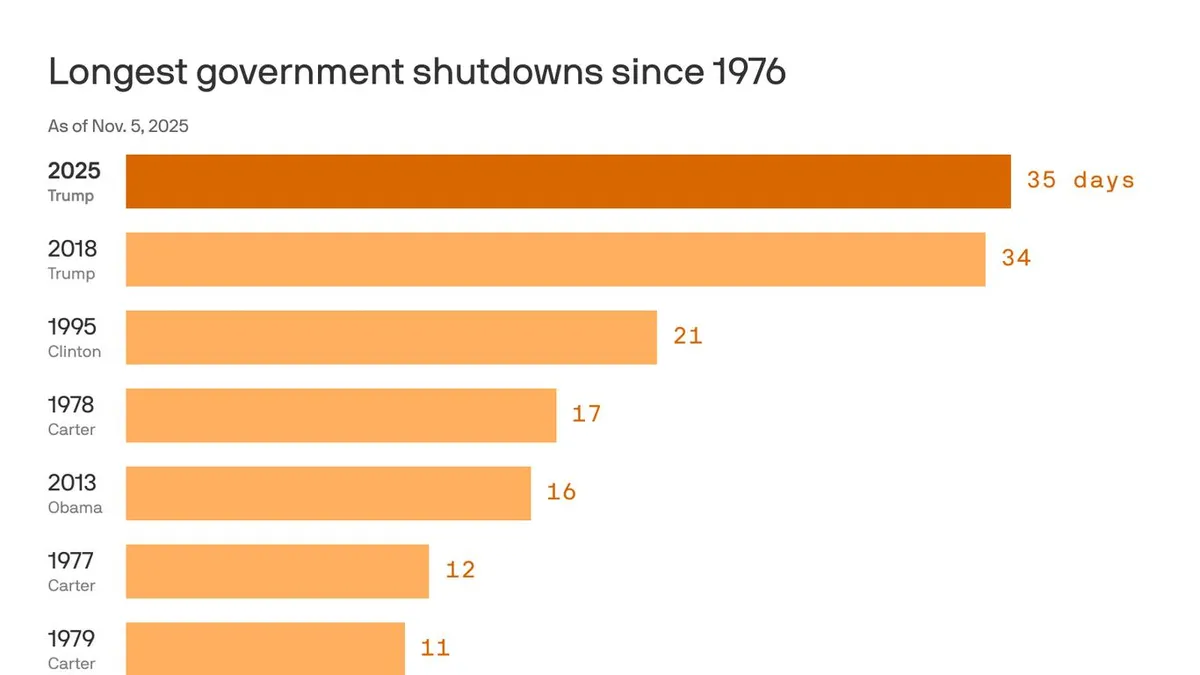
As of Wednesday, the U.S. government has officially entered its longest-ever shutdown, surpassing a previous milestone set during President Trump's first administration. This unprecedented shutdown has raised concerns nationwide, affecting federal workers and the economy alike.
During the ongoing 35 days of lapsed federal funding, countless federal workers have missed paychecks, leading to increasing anxiety over food access and financial stability. The shutdown has allowed Trump to implement parts of his agenda unilaterally, raising questions about the implications of such actions during a funding lapse.
The current shutdown has already exceeded the lengths of previous shutdowns under Trump's first term, which lasted 2 days and 34 days, respectively. Last month, Trump surpassed the threshold for the most cumulative days under a federal funding gap, eclipsing former President Carter's record of 56 days across five shutdowns. Notably, former President Reagan holds the record for the most government shutdowns, with eight occurring throughout his two terms.
The federal government defines shutdown days as starting after the last day budget authority was available and ending the day before new budget authority is enacted. This technicality plays a crucial role in understanding the impacts of the ongoing shutdown.
The current shutdown was triggered by a partisan disagreement regarding the extension of Affordable Care Act subsidies. Republican lawmakers have made claims suggesting that Democrats are attempting to fund the healthcare of undocumented immigrants, which has fueled further division. House Speaker Mike Johnson (R-La.) has repeatedly canceled House votes during this period, stating that representatives would only reconvene if the Senate passed the House Republicans' spending bill.
A recent NBC News poll indicates that 52% of voters blame Trump and congressional Republicans for the ongoing stalemate, while 42% hold Democrats accountable. Only 4% of respondents blame all parties involved. This division in public opinion highlights the political tensions surrounding the shutdown.
The economic ramifications of this shutdown are significant, with estimates from EY-Parthenon suggesting that each week without a resolution could lead to a $7 billion hit to the U.S. economy. Additionally, Russell Vought, the director of the Office of Management and Budget, has indicated potential layoffs affecting between 4,100 and 10,000 employees across various agencies. Although the Trump administration previously followed through on workforce reductions, a federal judge has temporarily blocked these layoffs.
As the shutdown continues, the implications stretch beyond just federal workers and the economy. The strategies being employed by Trump during this shutdown challenge a 150-year-old law and raise important questions about the balance of power in government.